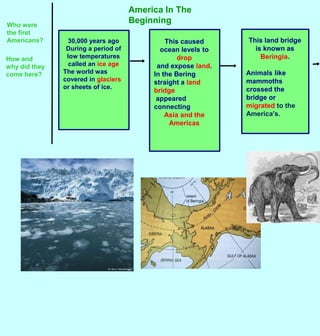The first Americans crossed into North America over a land bridge that connected Asia to Alaska around 30,000 years ago during an ice age. As the ice age ended, sea levels rose and the land bridge disappeared. These early peoples adapted to different environments across North America by developing diverse tools, clothing, shelters, and ways of life to hunt, gather, and farm local resources. While cultural practices varied regionally, Native Americans universally respected nature and only used what was necessary to survive.













